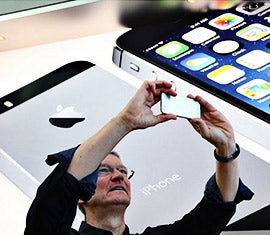
Nowadays, AMOLED has already become a hot word between smartphone areas. AMOLED technology have made a great progress in improving display quality and pushing the boat out in terms of new form factors. AMOLED shipments driving huge growth
Apple company also focus on OLED, industry reports point out that Foxconn-owned Sharp is mulling over a major 100 billion yen, about $864 million, investment into starting up an OLED production line, up from a $568 million investment announced in September 2016.In next iPhone, it may use OLED panel. According to Digitimes Research, in China, local manufacturers hope through expanding their own production capacity to diversity away from Samsung's hold on the AMOLED market. BOE Technology, Tianma Micro-electronics, and Visionox expected to become the top three manufacturers in China come 2020. Obviously, the market is still a competitive scene. AMOLED has become the darling child of the display industry, and growth in LCD pricing and investment appears to be slowing down as a result. But LCD will also work out an idea to improve its strengths. Meet flexible LCD HDR Generation One of the important features announced with the unveiling of Qualcomm's Snapdragon 835 SoC was support for 10-bit color, up from the current 8-bit format. This greatly increases the available steps for red, green, and blue between black and white, resulting in 1.07 billion different possible shades of color, up from 16.78 million with 8-bit color. With Snapdragon 835 powered smartphones expected to appear in the second quarter and second half of 2017, the manufacturers will lead us to see the difference between the different mobile phone.  .
|




